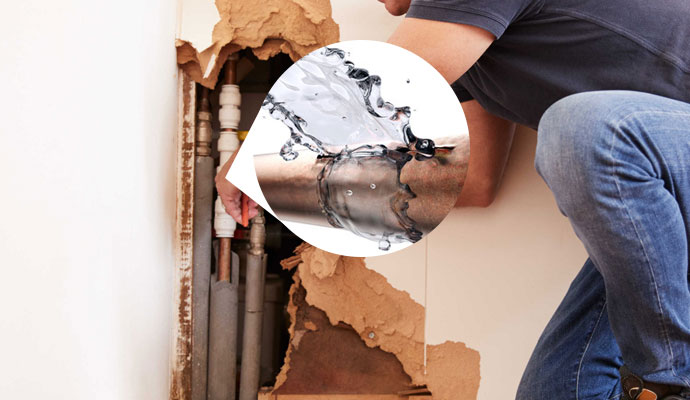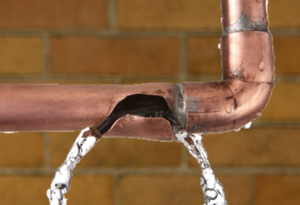From Detection to Correction: A Fast Approach to Handling Burst Pipes
From Detection to Correction: A Fast Approach to Handling Burst Pipes
Blog Article
Have you been in search of information and facts on What to Know Before Installing a Dishwasher?

A ruptured pipeline is a significant emergency; you can just stand as you enjoy water you pay very much to reunite with the earth. In worse cases, you see a swimming pool on your cooking area flooring, which is an excellent journey risk, particularly if you have children around. If the pipe that ruptured remained in your wall surfaces, problem: you may require to repaint that entire section.
How can a tragedy like a ruptured pipeline be stopped as well as managed? Well, by listening to your professional emergency plumbing professionals and also following these regulations.
Just how do I understand when my pipes have burst?
Rising and fall water stress
Pipelines do not just burst in a day. You may have seen that your kitchen area tap or shower does not run instantly when you turn the tap. It may pause for a couple of secs and after that blast you with even more pressure than typical.
In other circumstances, the water may seem typical at first, after that drop in pressure after a couple of seconds.
Wet wall surfaces as well as water stains
Prior to a pipeline bursts, it will certainly leak, the majority of times. If this persistent dripping goes undetected, the leak might graduate into a large gouge in your pipe. One simple way to prevent this emergency is to look out for damp walls advertisement water spots. These water stains will certainly lead you right to the leak.
Puddles under pipelines as well as sinks
When a pipeline bursts, the outflow develops a puddle. It might appear that the pool is growing in dimension, as well as despite the number of times you wipe the puddle, in a couple of minutes, there's an additional one waiting to be cleaned up. Often, you might not be able to map the puddle to any type of visible pipelines. This is a sign to call an expert plumber.
Untraceable dripping sounds
Pipeline bursts can take place in the most undesirable places, like within concrete, inside walls, or under sinks. When your house goes silent, you might have the ability to hear an aggravatingly persistent trickling noise. Also after you have actually inspected your shower head and also kitchen faucet, the trickling may proceed.
Precious reader, the leaking might be coming from a pipe inside your wall surfaces. There isn't much you can do about that, other than inform an expert plumber.
Turn off the Water
When water ices up, it expands in quantity by concerning 9 percent. And it broadens with tremendous force: The stress inside pipelines may go from 40 pounds per square inch to 40,000 psi! No pipeline can hold that much stress, so it breaks open. The break might take place where the ice forms, however regularly, it takes place where water pressure discovers a weak point in the pipe. That might be inches or perhaps feet from the frozen area. Discover the water shutoff valve and also turn off the water to avoid more damage. You could also need to turn off the power as well, depending upon where the leakages takes place and also how big it is.
Polluted water
Lots of people think a ruptured pipe is a one-way outlet. Rather the contrary. As water drains of the hole or tear in your plumbing system, impurities find their way in.
Your water may be polluted from the source, so if you can, inspect if your water storage tank has any kind of troubles. Nonetheless, if your drinking water is supplied and purified by the city government, you ought to call your plumber promptly if you see or scent anything funny in your water.
What do I do when I find a burst pipe?
Your water meter will continue to run also while your water wastes. To decrease your losses, locate the primary controls as well as turn the supply off. The water mains are an above-ground structure at the edge of your property.
How to Fix & Detect a Leaking Pipe
How Do I Know if a Pipe is Leaking?
Leak detection tests can help you determine if your pipe has a leak. Even if you don’t see an apparent leak, you should still conduct leak detection tests regularly to save water and money—and prevent major damage to your home.
Water meter. It can be helpful to figure out what your usual water meter usage numbers are and then monitor them regularly. To monitor your meter, first, turn off all water faucets in your home. Check the meter and write down the numbers. In a few hours, check the meter again. If the numbers have changed, you have a leak. Water gauge. Use a water gauge to test your water pressure. Your showerhead should produce a certain amount of water pressure based on its model and design. If the pressure is lower than it is supposed to be for that specific showerhead, your home likely has a leak. Puddles. Look inside your bathroom, laundry, and kitchen sink cabinets. Puddles around the cabinets or around toilets, tubs, showers, and washing machines indicate the presence of a leaking pipe. You may also notice loose tiles, peeling or flaking paint, or mold caused by water accumulation. Napkin test. Even if you don’t see any puddles, you may still have a leak. You can test for water leaks in the bathroom, laundry, and kitchen by wiping below-sink connections with a napkin, paper towel, or piece of toilet paper. If it becomes damp, you probably have a leaking pipe under the sink. Discolored walls. Walls that are discolored—usually with brown or yellow stains—or bulging might mean that they have been impacted by water damage caused by a leaking pipe. Smell. A leaky pipe will create sitting water, and over time, that water may develop a musty smell. If your home smells musty, but you can’t locate the source, it may be due to a leak. Steps for Fixing a Leaking Pipe
A leaky drain can be remedied by tightening the pipe base, replacing the drain seal, caulking the rim, and tightening the pipe nut. Similarly, a leaking toilet pipe can be treated by tightening the packing nut. You may also need to replace the valve. A leaky faucet may just need tightening or replacement of the washers. If that doesn’t work, consider replacing your faucet. If your pipe has a hole in it, you may want to use a pipe leak sealer or pipe leak tape. This quick fix for water pipe leaks can also temporarily fix a copper pipe leak. https://www.ahs.com/home-matters/quick-tips/how-to-tell-if-pipes-are-leaking/

As a fervent reader on How to Install and Connect a New Dishwasher, I think sharing that piece of content was essential. In case you enjoyed our blog post plz remember to pass it around. Thank you for your time. Visit again soon.
Schedule Now!
Report this page